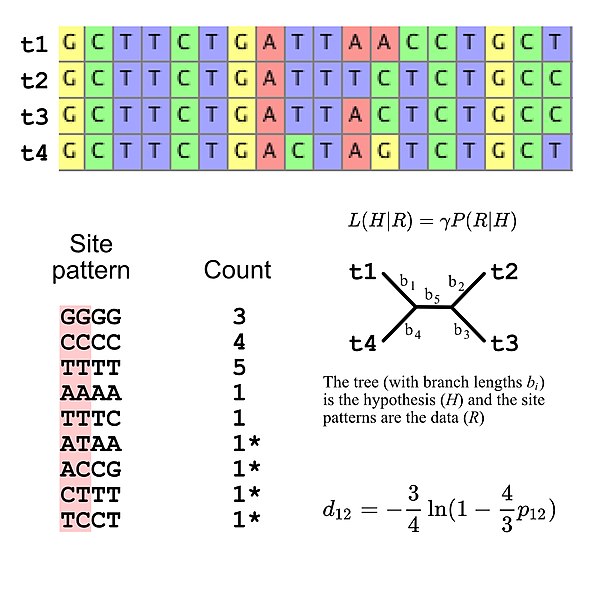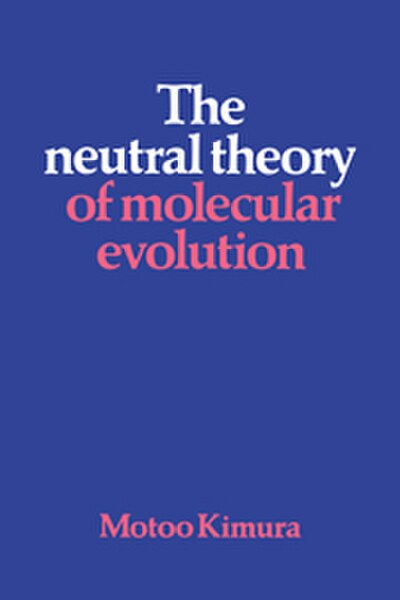Molecular evolution describes how inherited DNA and/or RNA change over evolutionary time, and the consequences of this for proteins and other components of cells and organisms. Molecular evolution is the basis of phylogenetic approaches to describing the tree of life. Molecular evolution overlaps with population genetics, especially on shorter timescales. Topics in molecular evolution include the origins of new genes, the genetic nature of complex traits, the genetic basis of adaptation and speciation, the evolution of development, and patterns and processes underlying genomic changes during evolution.

Multiple sequence alignment (in this case DNA sequences) and illustrations of the use of substitution models to make evolutionary inferences. The data in this alignment (in this case a toy example with 18 sites) is converted to a set of site patterns. The site patterns are shown along with the number of times they occur in alignment. These site patterns are used to calculate the likelihood given the substitution model and a phylogenetic tree (in this case an unrooted four-taxon tree). It is also necessary to assume a substitution model to estimate evolutionary distances for pairs of sequences (distances are the number of substitutions that have occurred since sequences had a common ancestor). The evolutionary distance equation (
This hedgehog has no pigmentation due to a mutation.
Neutral theory of molecular evolution
The neutral theory of molecular evolution holds that most evolutionary changes occur at the molecular level, and most of the variation within and between species are due to random genetic drift of mutant alleles that are selectively neutral. The theory applies only for evolution at the molecular level, and is compatible with phenotypic evolution being shaped by natural selection as postulated by Charles Darwin.
Image: The Neutral Theory of Molecular Evolution



